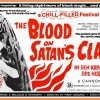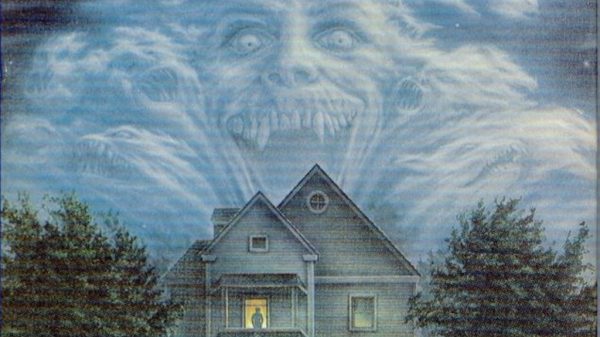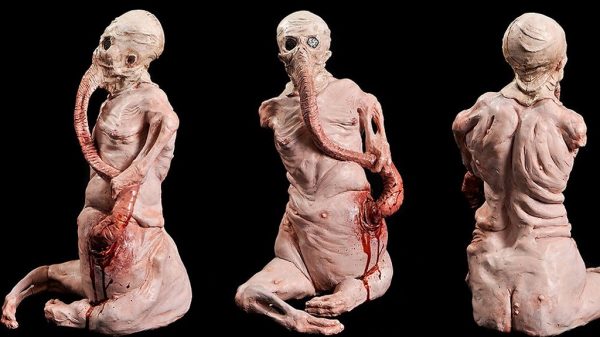As we all in the U.S. face an uncertain future, some of us have developed some anxiety over many aspects of our lives. Things like censorship that seemed a distant impossibility now look slightly more probable, as what was thought impossible became reality. Best to look to the past in order to make a better future. So in terms of censorship, there is one moment in American history that was a truly terrifying example of where conservative fervor and uninformed opinion presented as fact led to a bad time for artists and lovers of the strange and obscene.

In the late 1940s, there was a guy by the name of William Gaines whose father, Max Gaines, had developed the four-color saddle stitch newspaper pamphlet and owned the influential “Educational Comics” publishing house, which was known at the time for its biblical comics. In 1947, William Gaines’ father died in a freak boating accident and left the publishing house to his son. In 1949, William Gaines decided to take over the family business and in a twist of irony for the biblical comic publisher, started making horror comics and scaring the hell out of an entire generation. It is William Gaines and his renamed “Entertaining Comics” that ignited the spark of terror and weirdness that inspired countless artists with classic comics like Tales From the Crypt, Weird Fantasy, Haunt of Fear, Weird Science, and Vault of Horror as well as the enduring comedy magazine, MAD. I guess the lord really does work in mysterious ways.

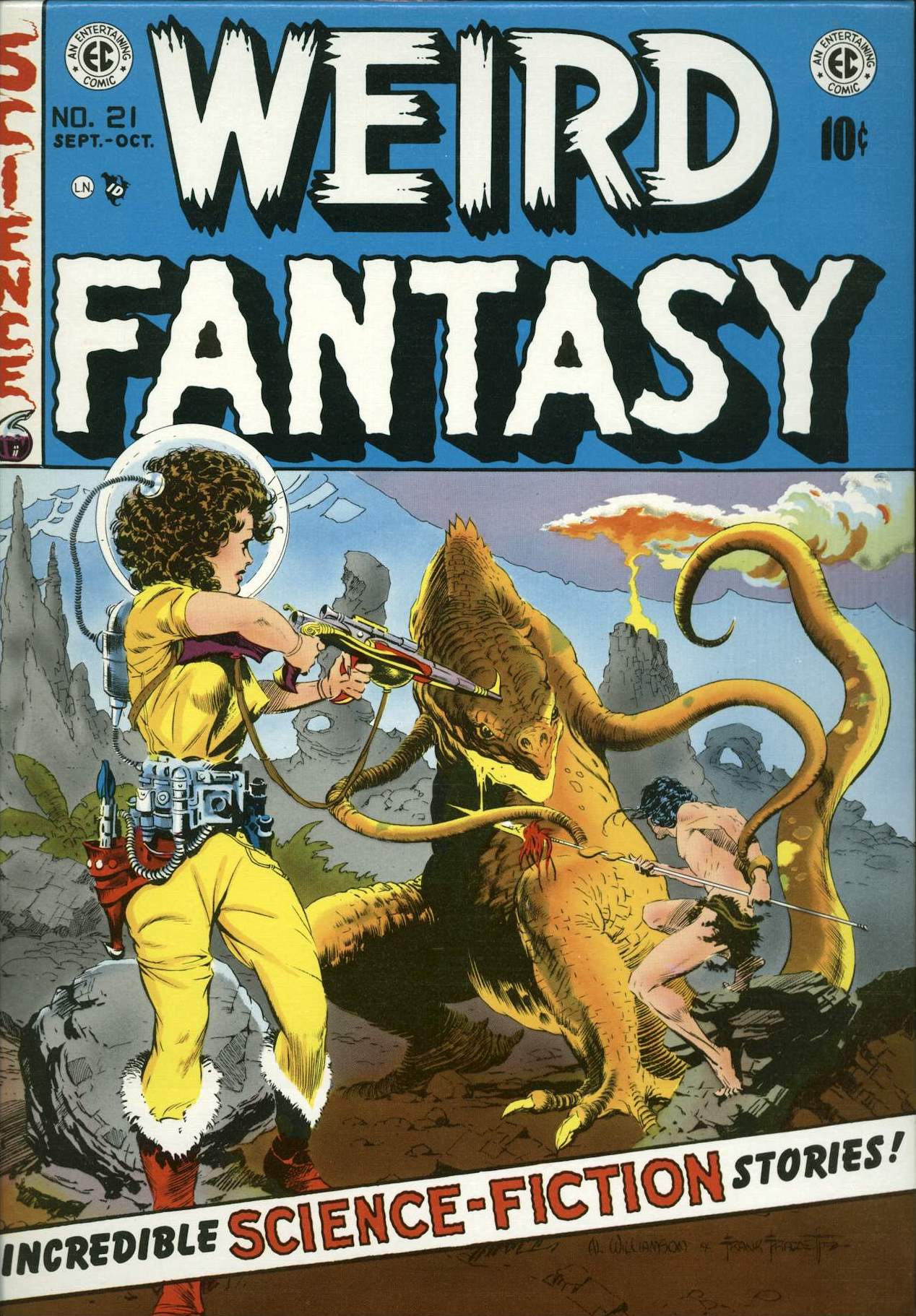

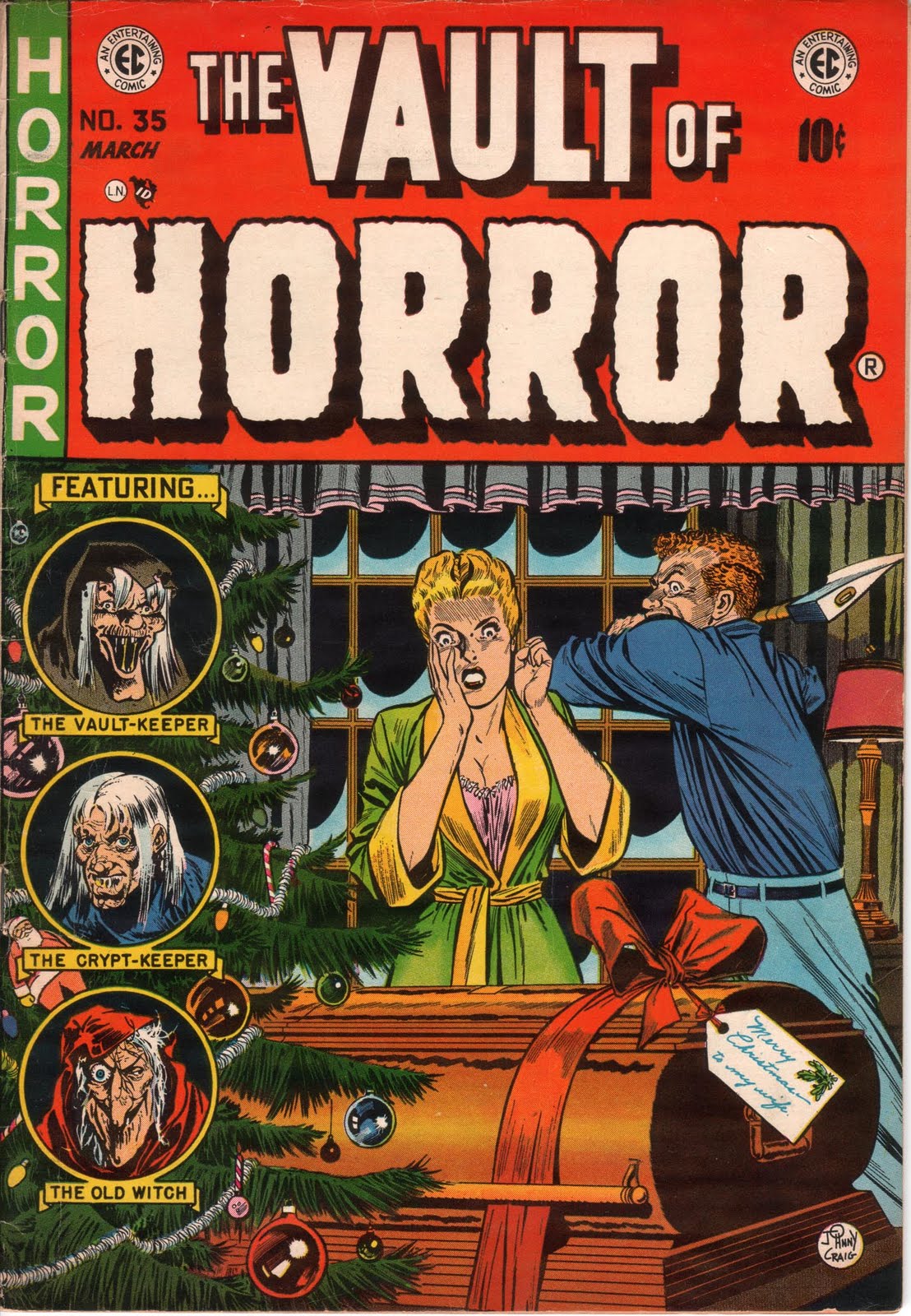
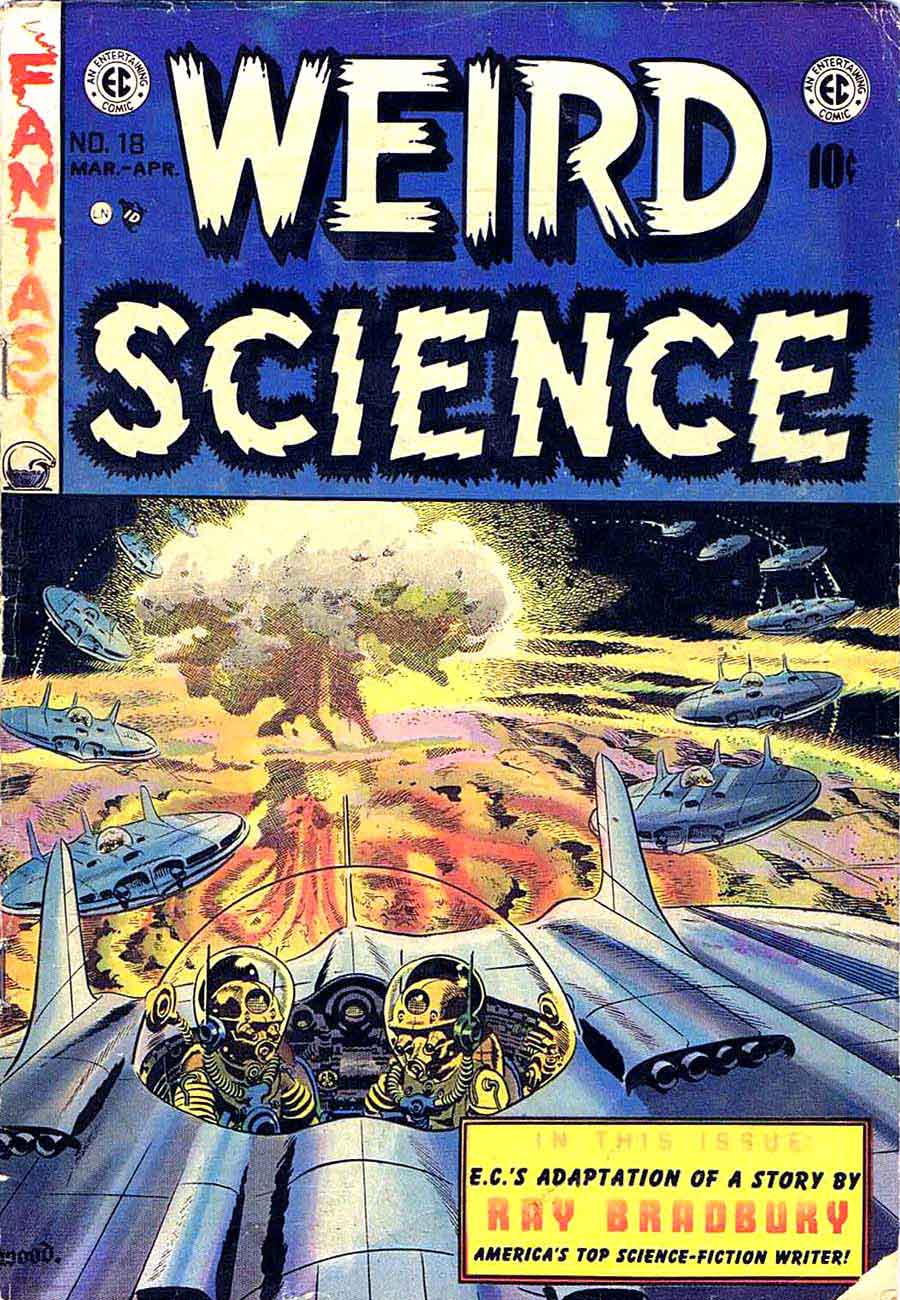

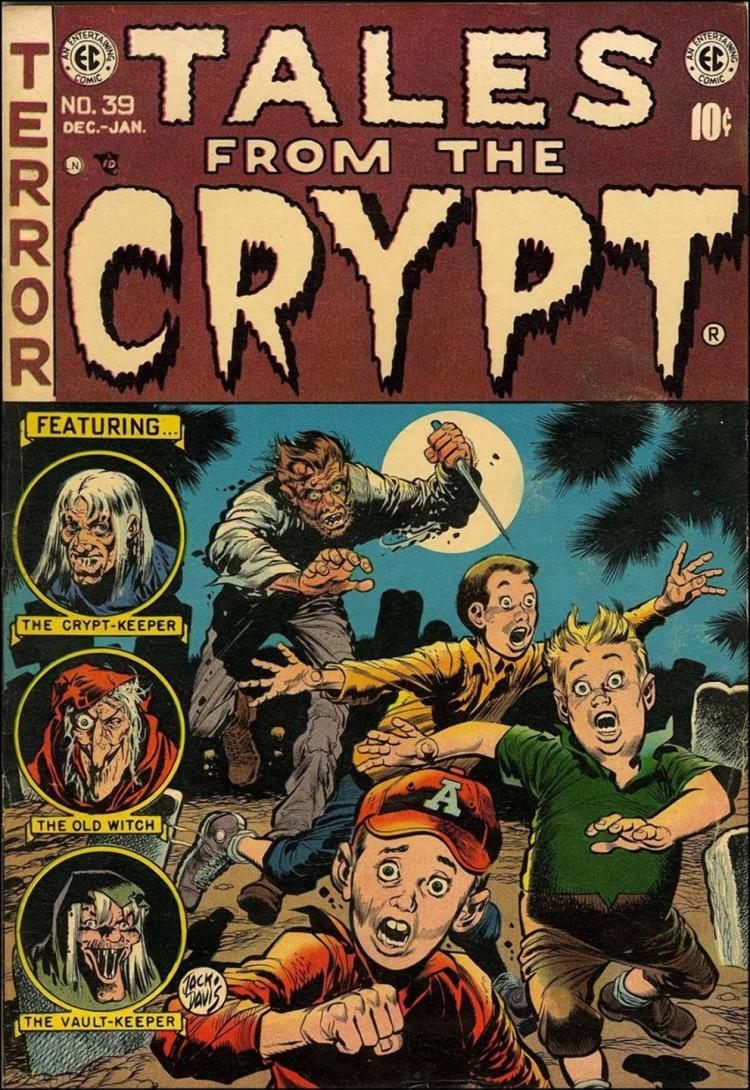




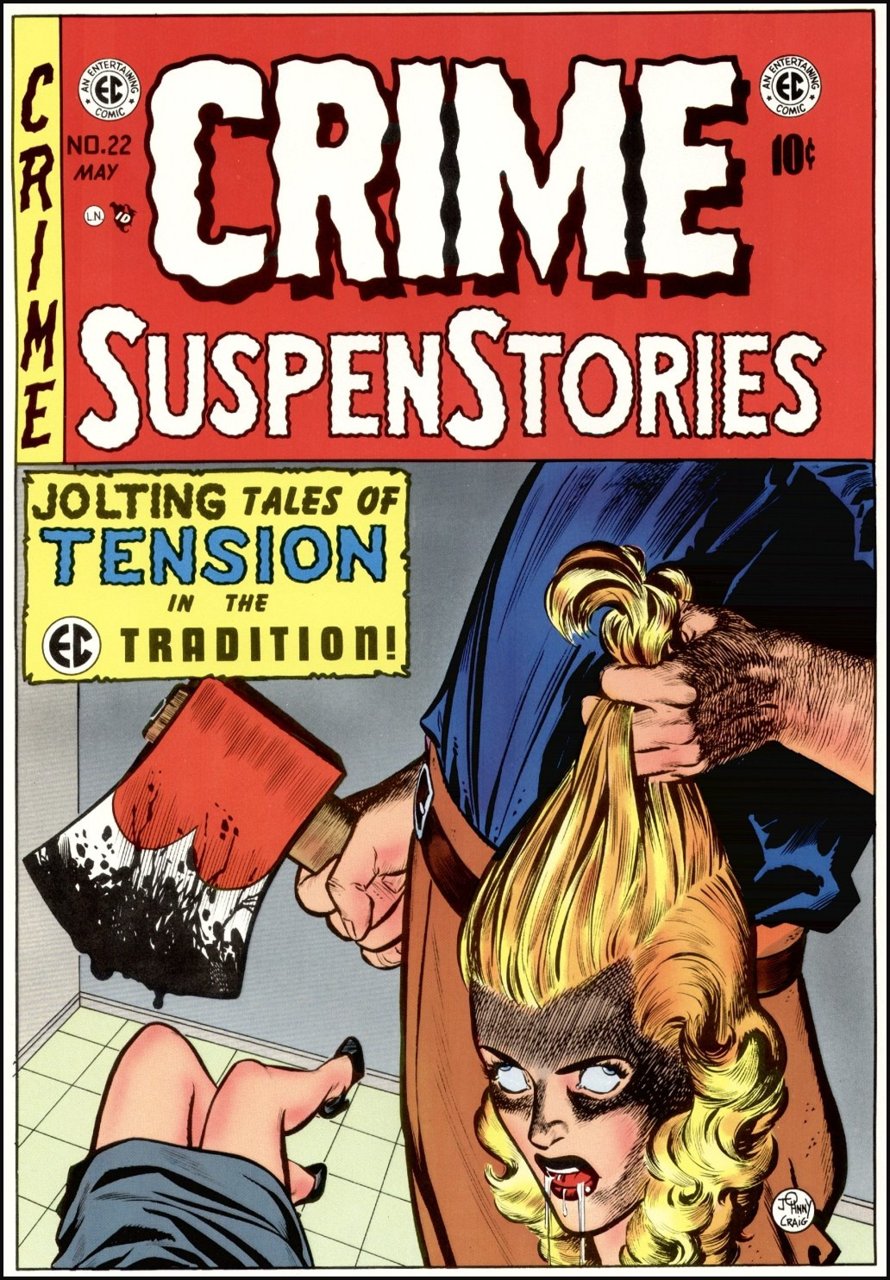
EC wasn’t the first to make horror comics, but they were definitely the best quality and most influential. The honor of first horror comic goes to Avon Publication’s Eerie #1 in 1947. There were a slew of publishers spewing out whatever terrifying stuff they could come up with. Worlds of Fear, Mister Mystery, Adventures into the Unknown, and Chamber of Chills all contributed to the growing craze. Murder, mutilation, black magic, and the Lovecraftian madness of the unknown lept from the page and terrified readers at the hands of zombies, warlocks, and the innocent-looking girl next door that would actually turn out to be a skin suit filled with radioactive leeches (I’m not joking. They actually wrote a story about this). Writers and artists were able to cut loose and depict some really gnarly stuff, and in 1950s America no less.



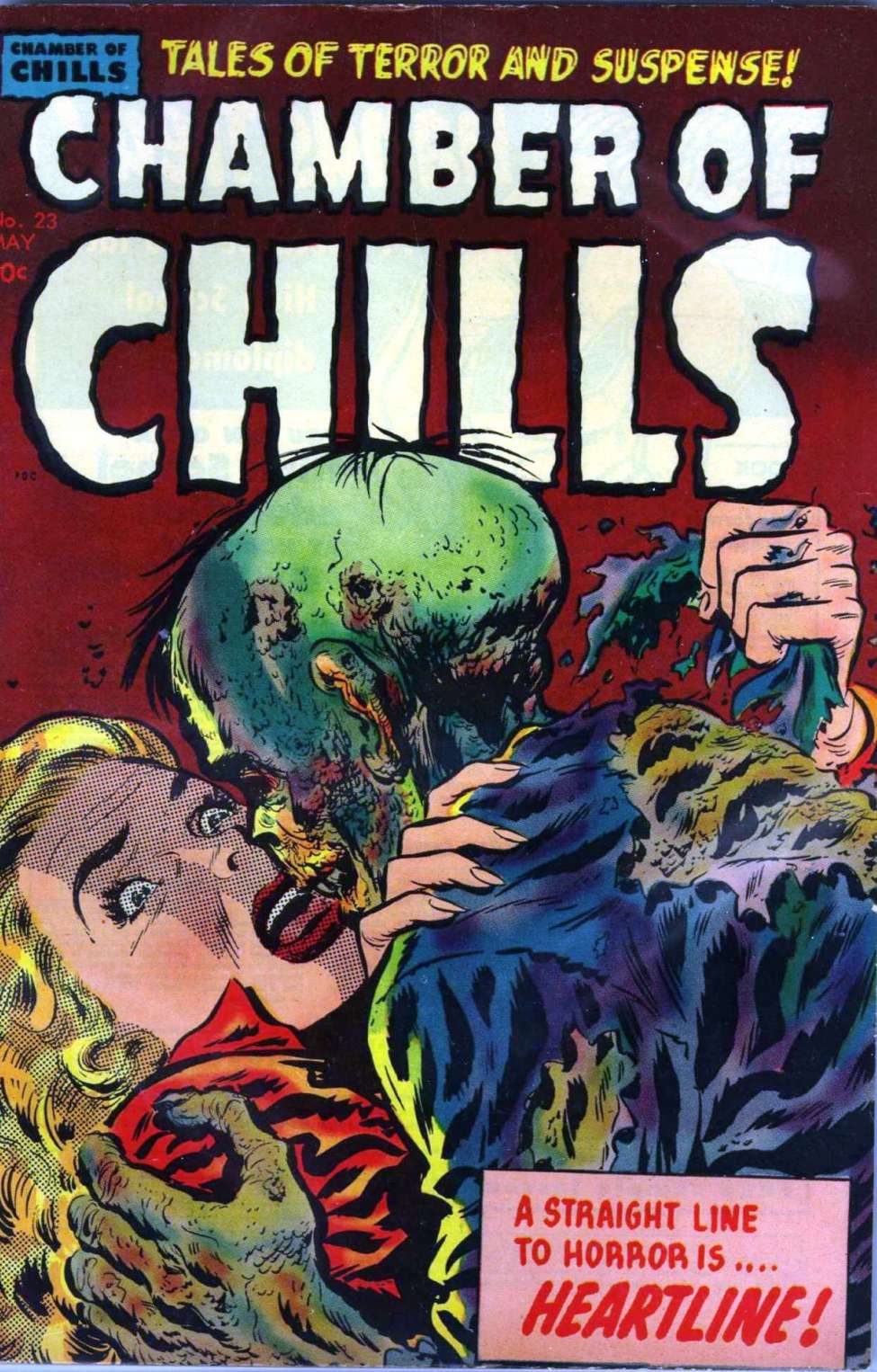
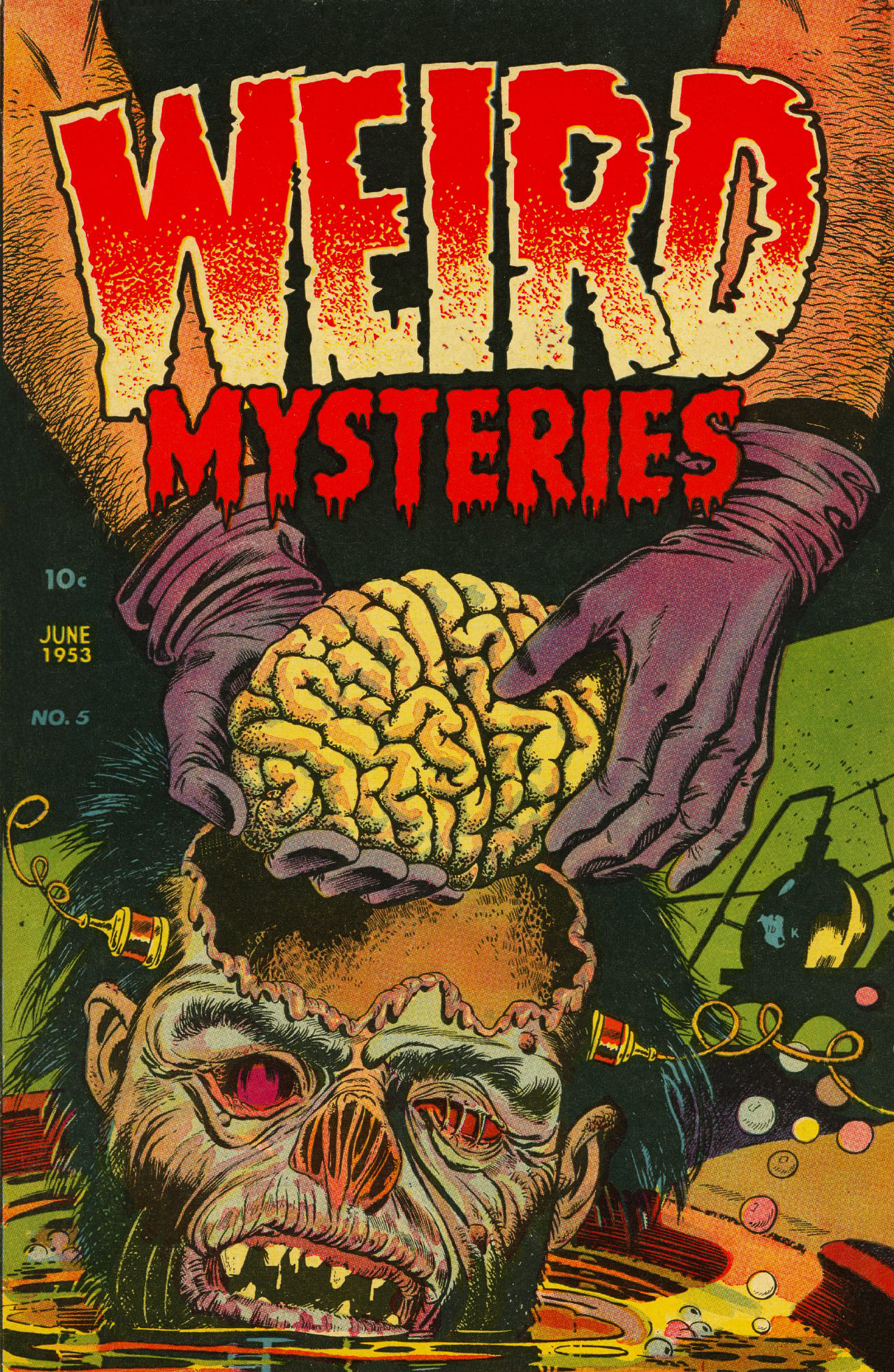



The Leave it to Beaver dream was alive and well, with the streets lined with white picket fences and manicured green lawns. However, much like a David Lynch movie, there was something just beneath that glamour of clean-cut America. While a lot of people today like to think that the golden age of comic books was entirely dominated by classics like Superman in action comics and Batman in Detective Comics, somewhere in the mid 1940s the superhero comic began to wane in popularity and became eclipsed by sci-fi, romance, crime, war, and finally horror stories, much like how film began to grow more dark with the rise of film noir. Media was getting darker, especially in comic books, and people loved it.
Unfortunately, the world is full of people that like to use art as a scapegoat for problems that it rarely has anything to do with – whether it’s music, video games, or in this case, comics. Something is always to blame for the corruption of the youth. According to a book titled Seduction of the Innocent by a psychologist by the name of Fredric Wertham, violence in these extreme horror and crime comics – specifically those published by EC comics – made children violent and terrible youths. Nowadays, after having dealt with this same sentiment that came with the advent of extreme music and extreme video games, we all know better than to believe that violence in media transforms people into rabid, bloodthirsty criminals.

Frederic Wertham was not an altogether awful human being that based his conclusions on religious zealotry. The guy at least tried to have a semblance of scientific method to support his claims. The problem was that he based his research on comic violence influencing youths on a sample population of children from troubled backgrounds and histories of behavioral issues. Essentially, he took all his information from a group of already messed-up kids that were anything but representative of society as a whole and tried to pin the blame on comic books rather than an inherent behavioral disorder or troubled background. This in addition to skewing statistics, exaggeration of content, and rephrasing and editing statements from subjects pretty much made his book’s argument useless in the long run. He doesn’t deserve the demonization that the comics world has given him, though. He was not a bible-thumping crusader since he did push for no censorship of nude magazines, and opposed racial segregation. He was really just trying to help kids although he was a little misguided in condemning the comics medium as a whole by saying it was turning children into delinquents. On top of this, he claimed that Wonder Woman’s strength and independence made her a lesbian, and the Batman comics contained homosexual context – but that’s a whole other can of worms.

However, if you give hyped-up conservatives an inch, they take a mile – or in this case, they take your comics and burn them. Wertham’s claims riled people up into an anti-comic book fervor, leading to several towns buying up all the comics from newsstands and burning them in bonfires. Most people took Wertham’s claims as credible based on the fact he was a doctor, which meant he had to be right, of course.
With this outbreak of anti-comic sentiment, the comics industry was put on trial by the Senate Judiciary Committee’s Subcommittee to Investigate Juvenile Delinquency in 1954. After hearing the testimony of psychologists like Wertham and publishers like William Gaines, the conclusion was reached that the comics industry would form a self-regulating institution rather than the government stepping in to regulate. This institution would be called the comics code authority and it would censor the hell out of anything deemed too intense for young readers.
To this day, the comics code authority is infamous for its heavy censorship and almost laughable criteria that were mostly subjective and left to strict interpretation, as you can see below:
- Crimes shall never be presented in such a way as to create sympathy for the criminal, to promote distrust of the forces of law and justice, or to inspire others with a desire to imitate criminals.
- If crime is depicted it shall be as a sordid and unpleasant activity.
- Policemen, judges, government officials, and respected institutions shall never be presented in such a way as to create disrespect for established authority.
- Criminals shall not be presented so as to be rendered glamorous or to occupy a position which creates a desire for emulation.
- In every instance good shall triumph over evil and the criminal punished for his misdeeds.
- Scenes of excessive violence shall be prohibited. Scenes of brutal torture, excessive and unnecessary knife and gunplay, physical agony, gory and gruesome crime shall be eliminated.
- No comic magazine shall use the words “horror” or “terror” in its title.
- All scenes of horror, excessive bloodshed, gory or gruesome crimes, depravity, lust, sadism, masochism shall not be permitted.
- All lurid, unsavory, gruesome illustrations shall be eliminated.
- Inclusion of stories dealing with evil shall be used or shall be published only where the intent is to illustrate a moral issue and in no case shall evil be presented alluringly, nor so as to injure the sensibilities of the reader.
- Scenes dealing with, or instruments associated with walking dead, torture, vampires and vampirism, ghouls, cannibalism, and werewolfism are prohibited.
- Profanity, obscenity, smut, vulgarity, or words or symbols which have acquired undesirable meanings are forbidden.
- Nudity in any form is prohibited, as is indecent or undue exposure.
- Suggestive and salacious illustration or suggestive posture is unacceptable.
- Females shall be drawn realistically without exaggeration of any physical qualities.
- Illicit sex relations are neither to be hinted at nor portrayed. Rape scenes as well as sexual abnormalities are unacceptable.
- Seduction and rape shall never be shown or suggested.
- Sex perversion or any inference to same is strictly forbidden.
- Nudity with meretricious purpose and salacious postures shall not be permitted in the advertising of any product; clothed figures shall never be presented in such a way as to be offensive or contrary to good taste or morals.
Some of these criteria, like no depictions of rape and panels depicting people outright bumping uglies for a twelve-year-old to see, are valid restrictions on comics that would specifically target a very young audience. Outright banning vampires is a little silly, though, as you’ll see in Part Two: the aftermath. In Part Two, we will explore the effects of the dreaded comics code authority and the enduring legacy of these extreme works of art.








